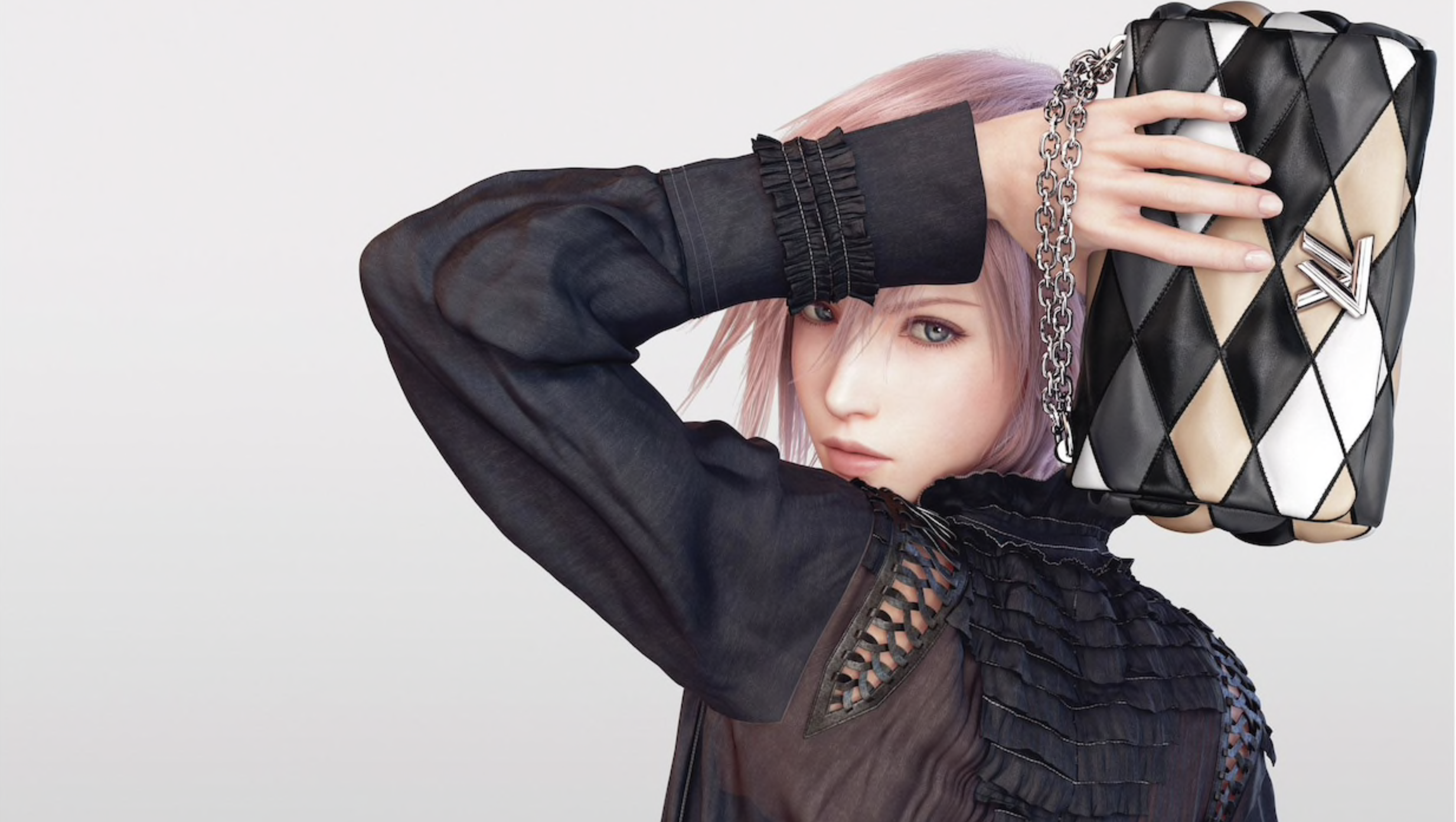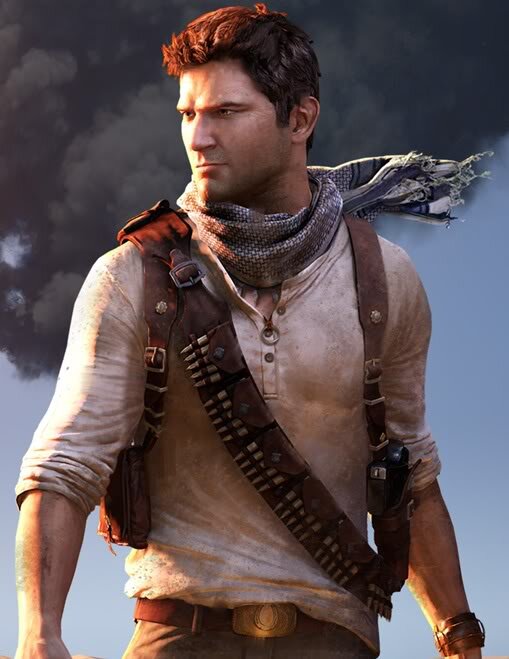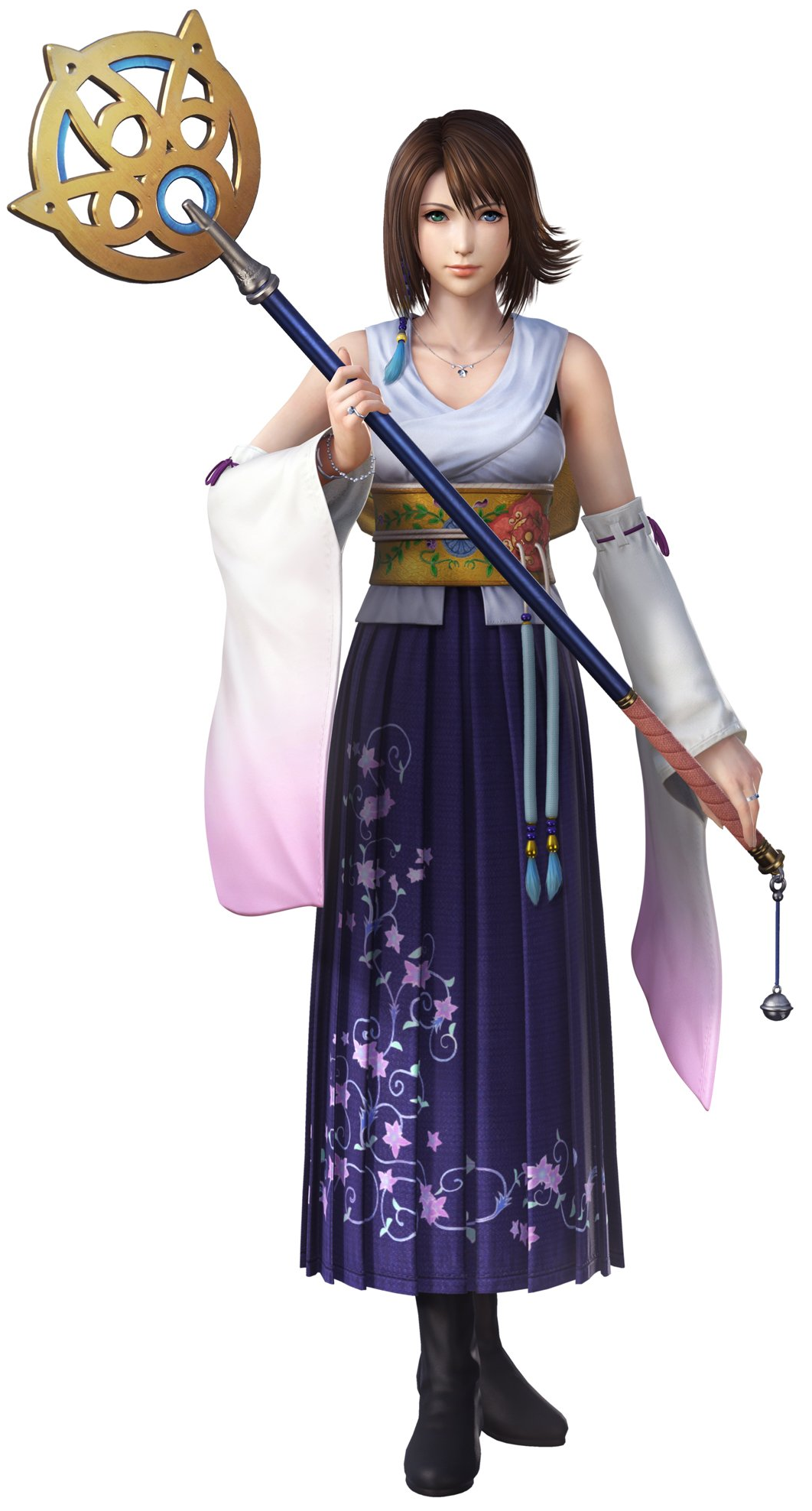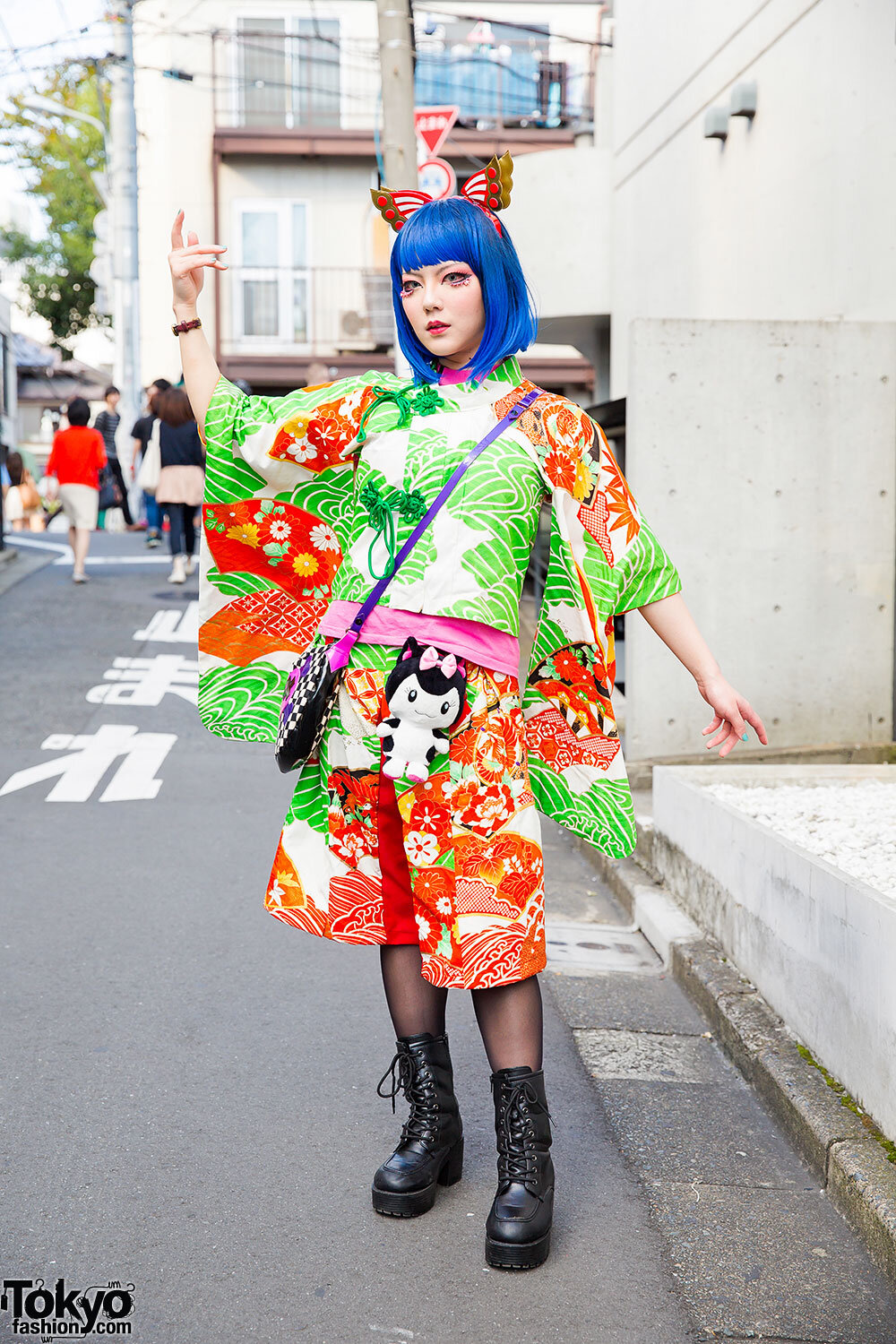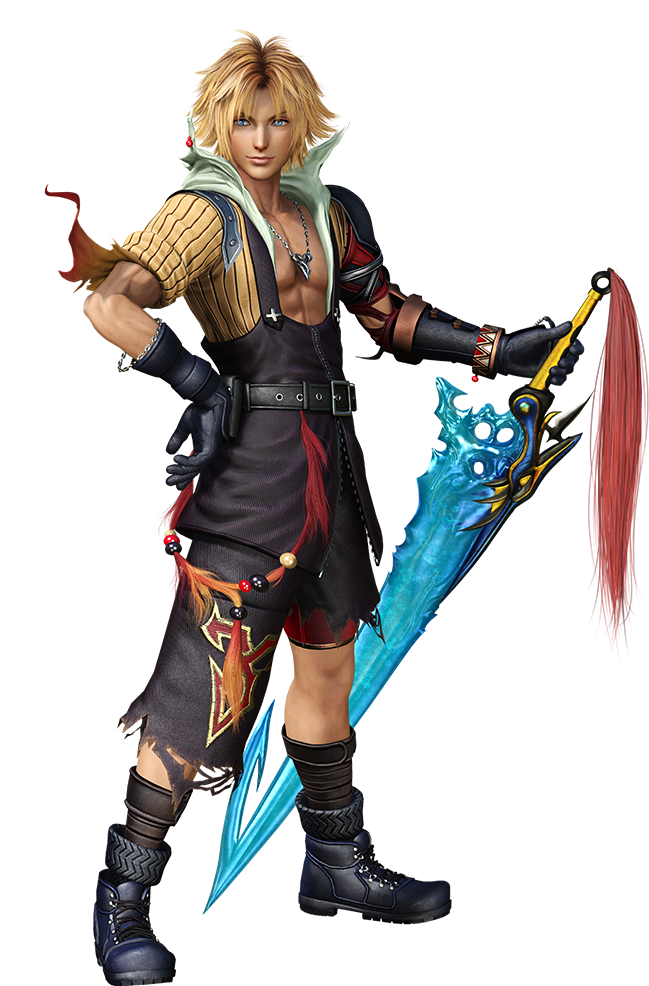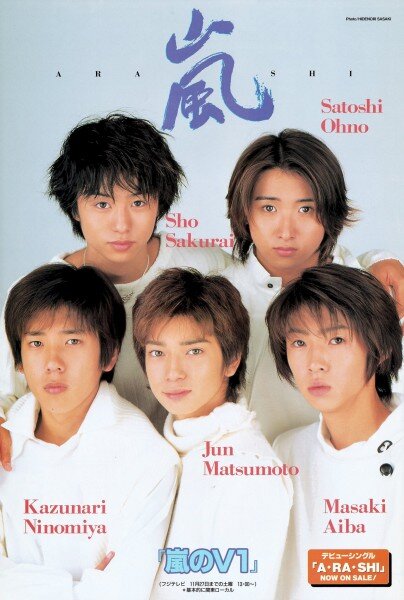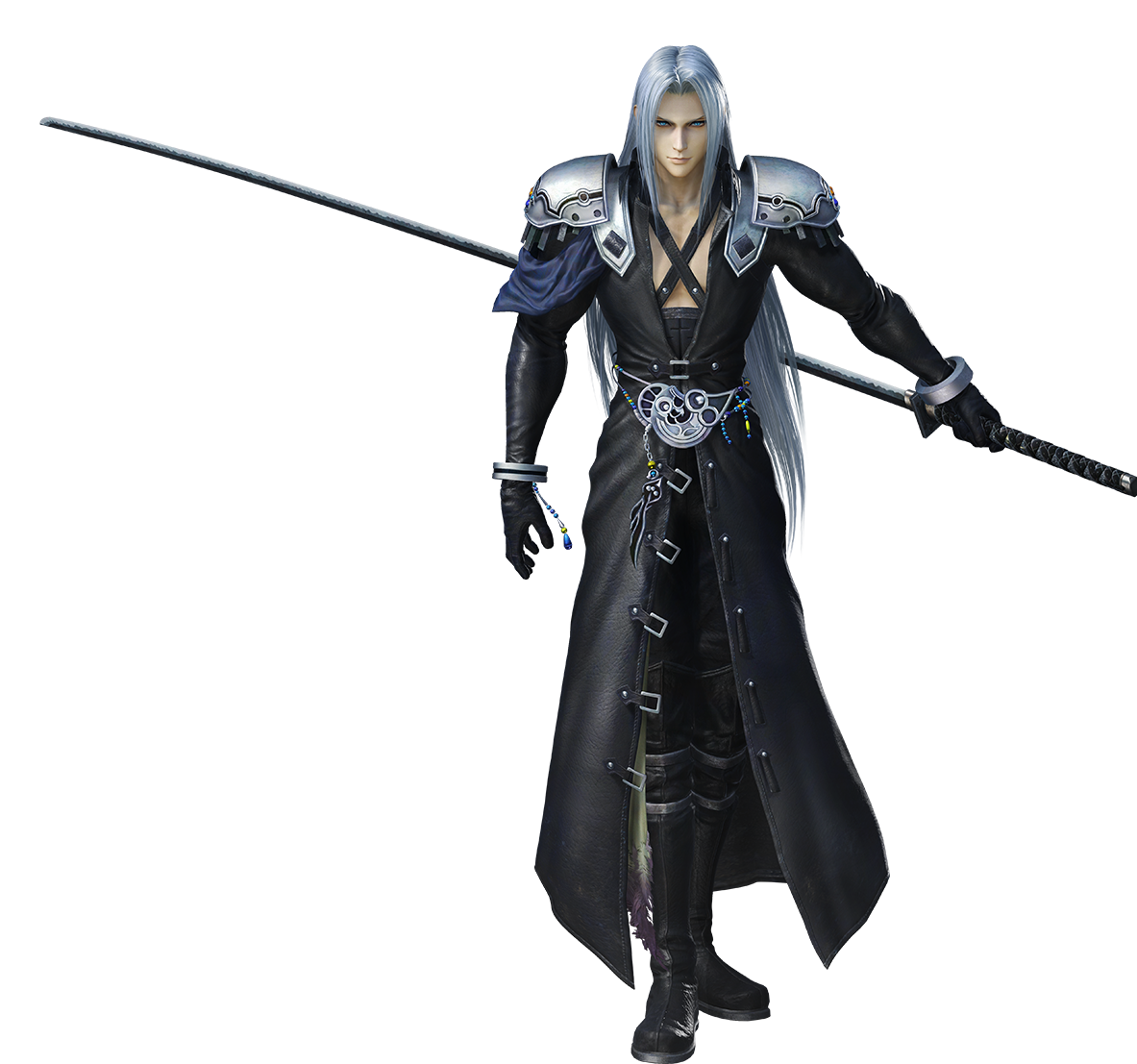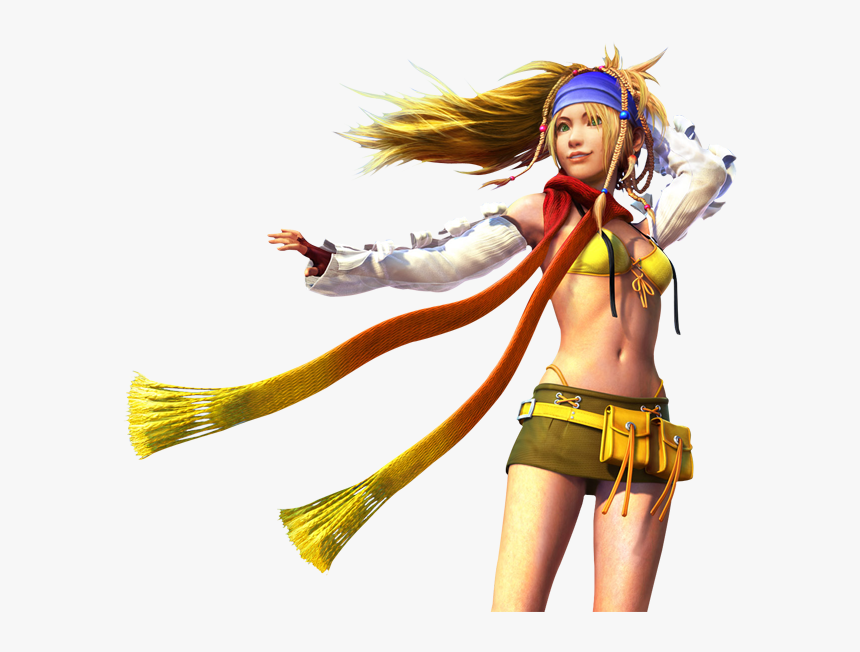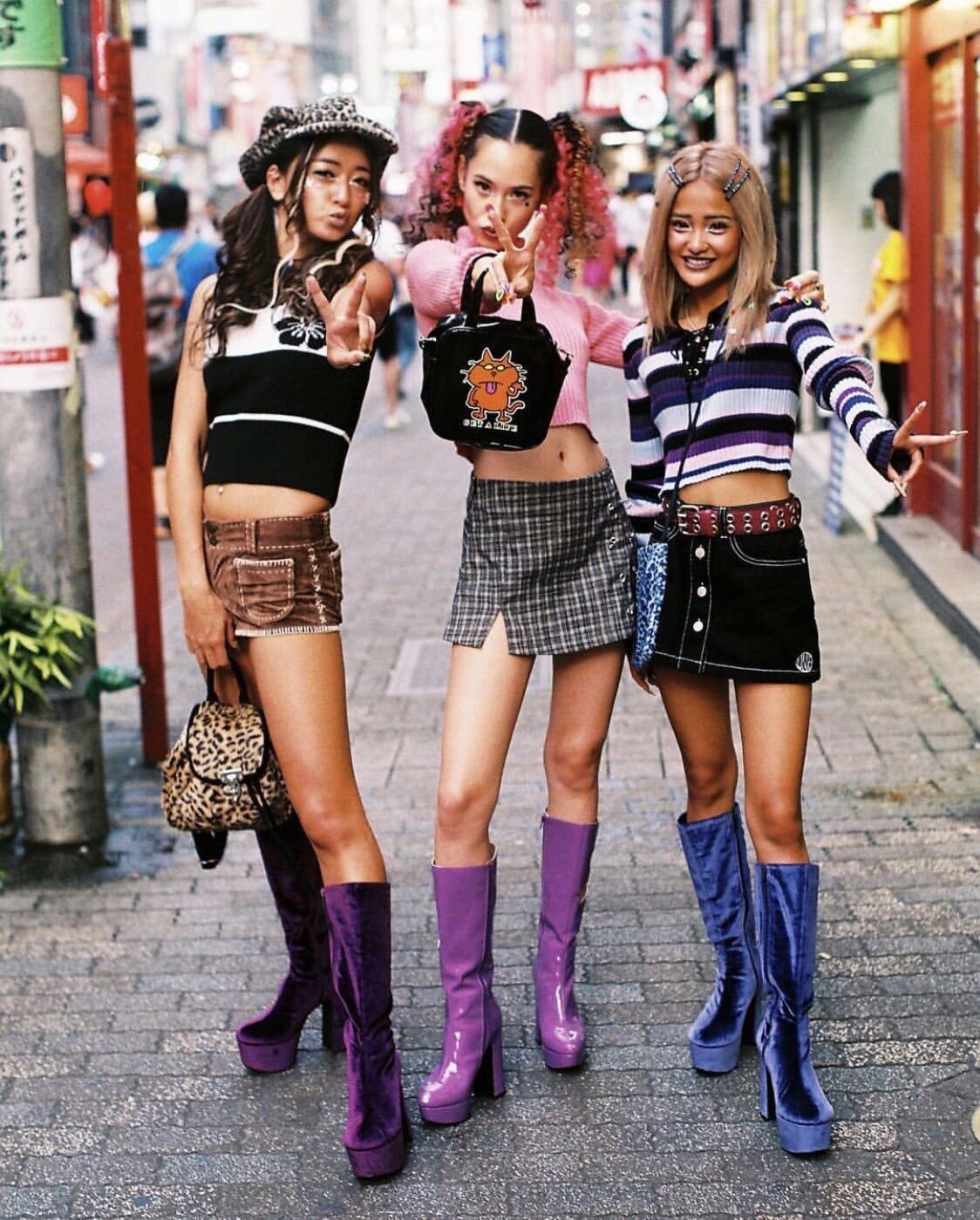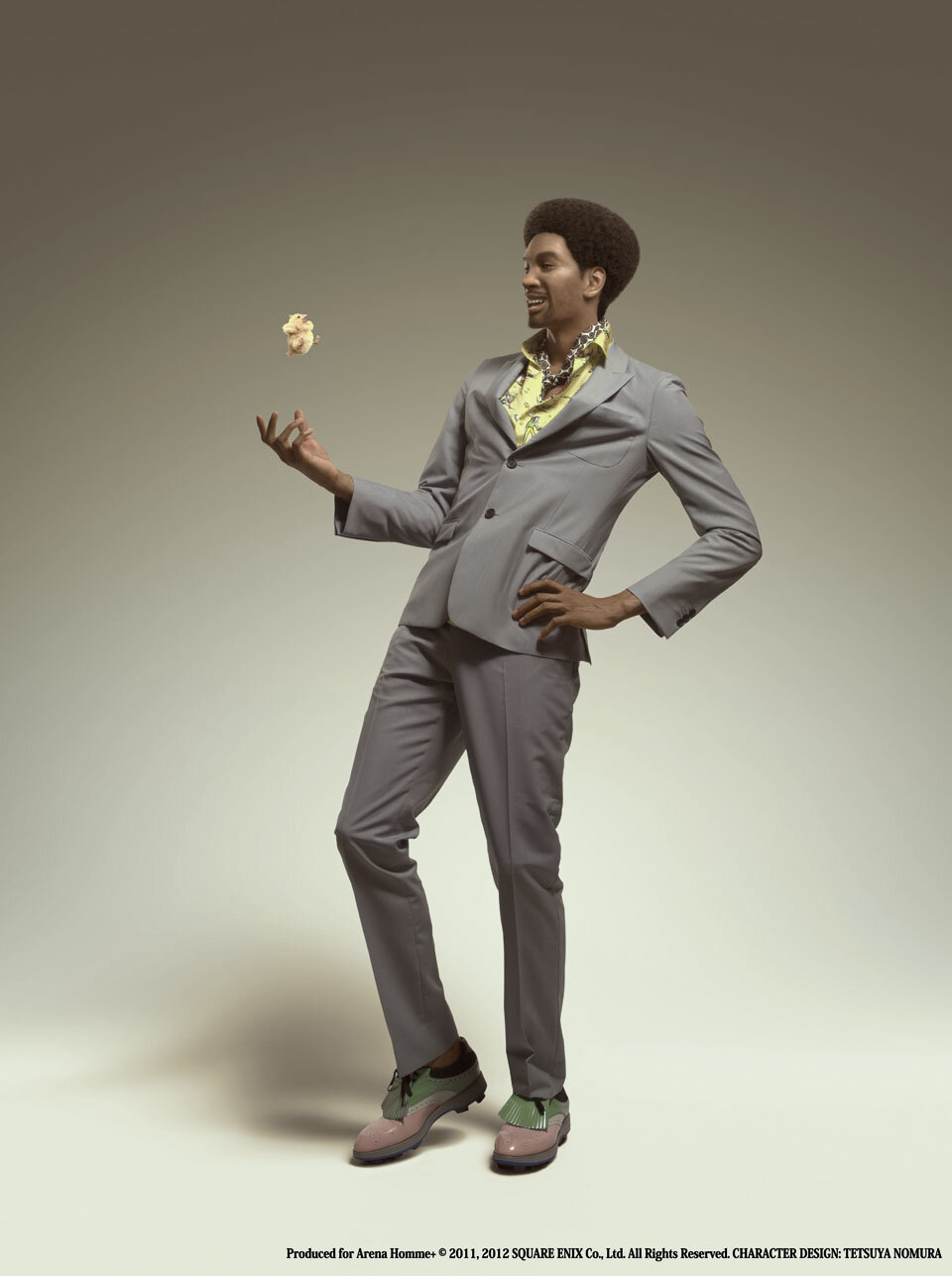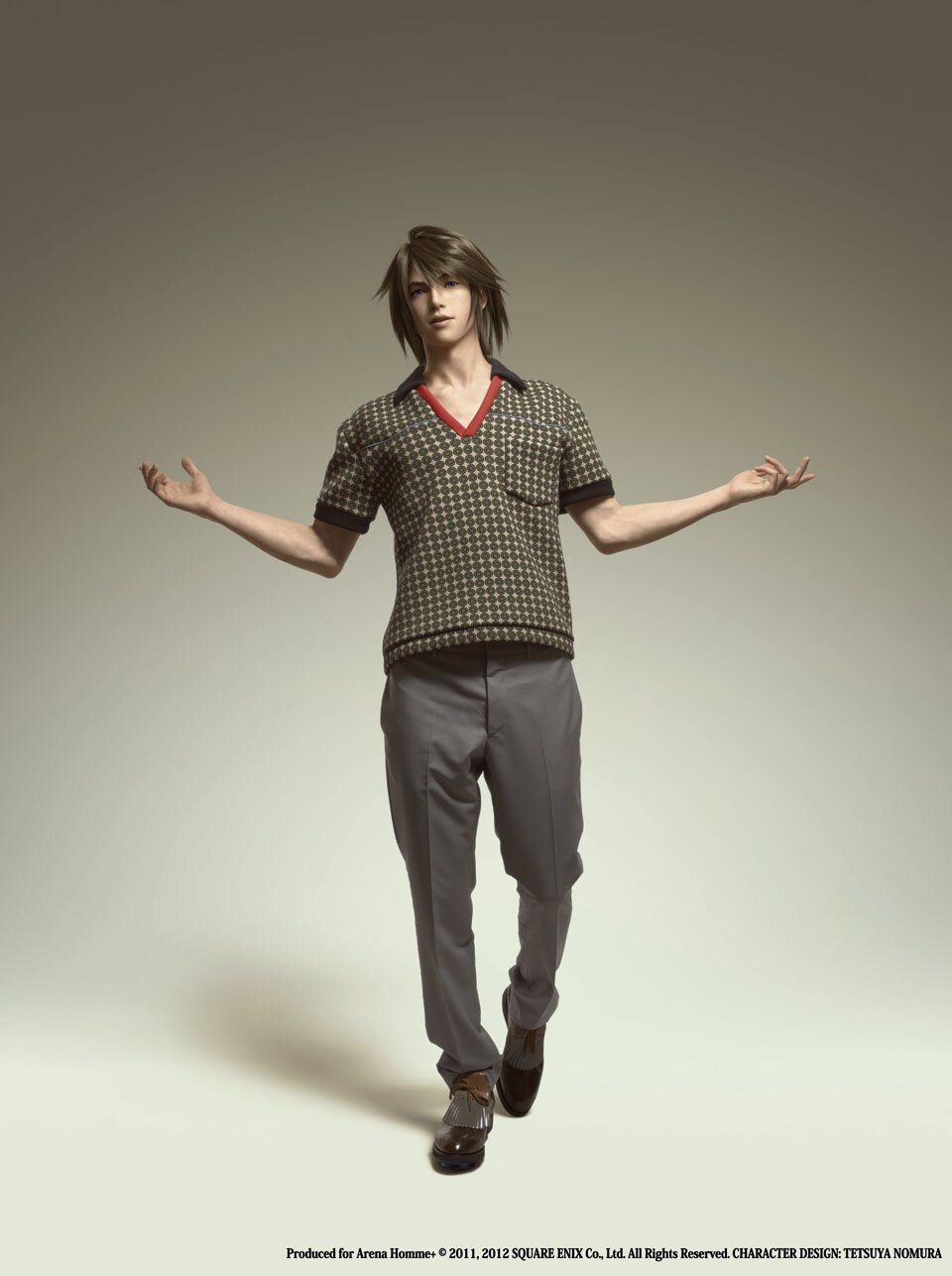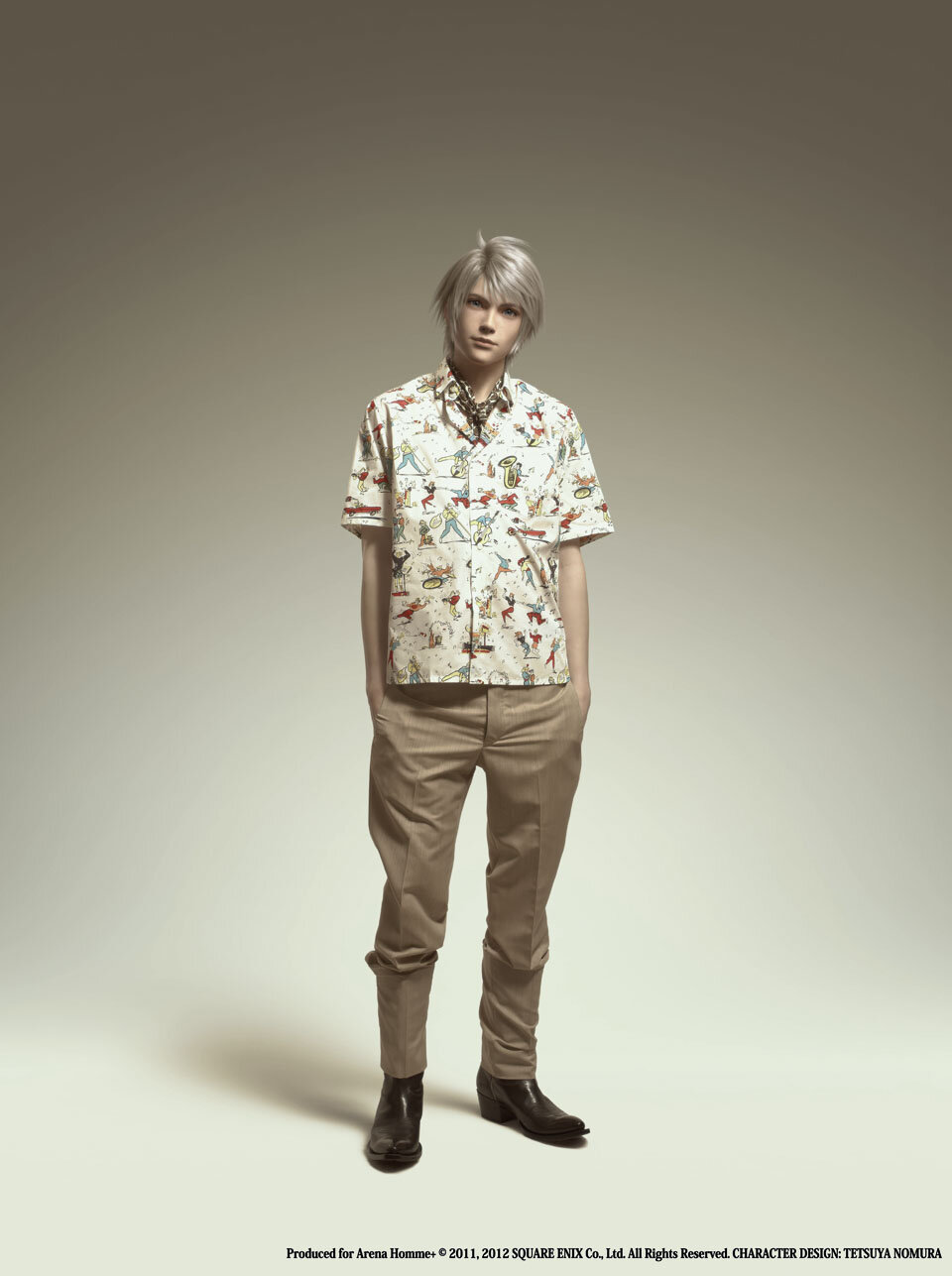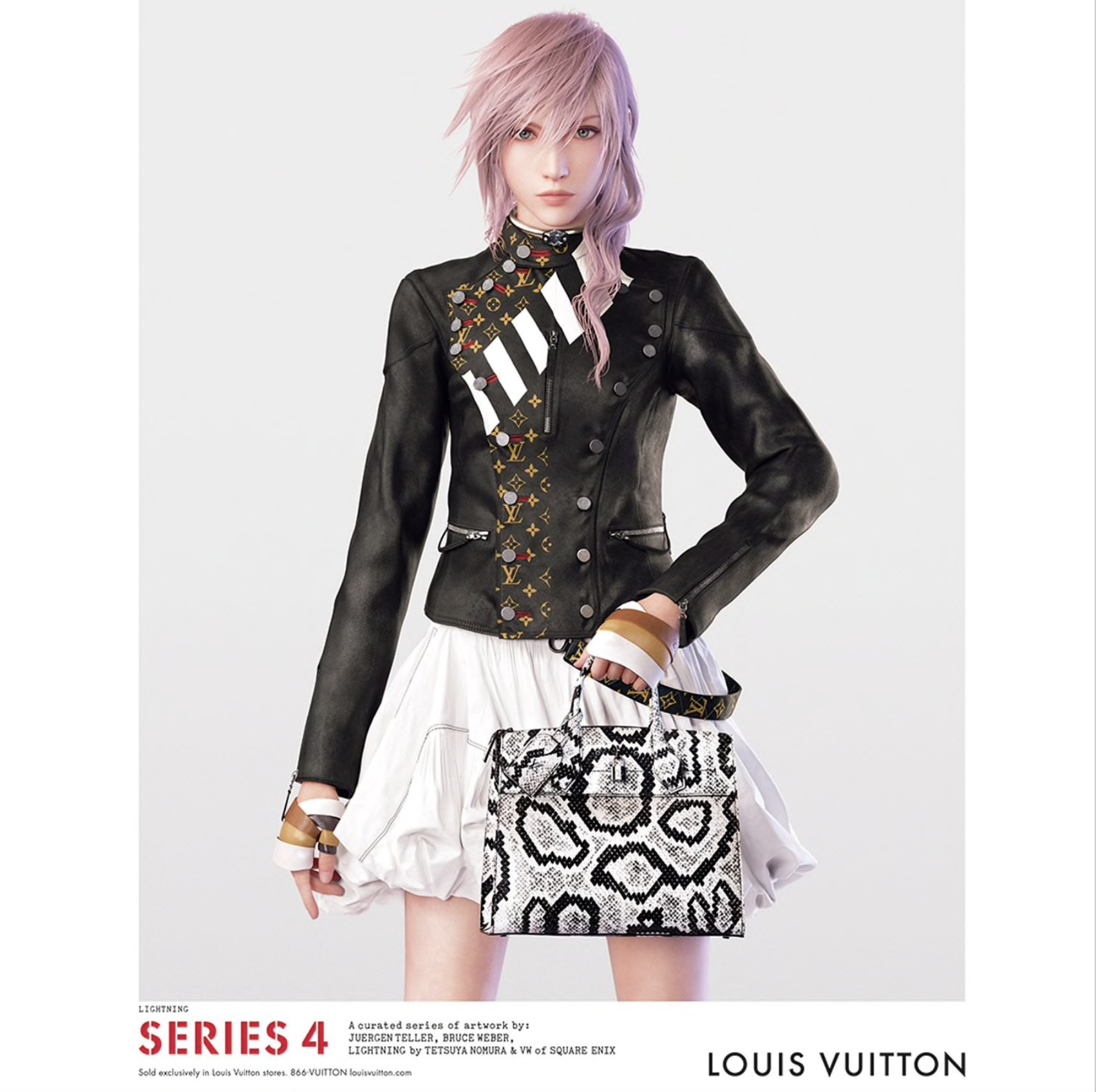Final Fantasy And The History Of Video Game Fashion
Lightning for Louis Vuitton SS16.
By Hannah Schmidt-Rees
Time to write about two very different and very contrasting topics; fashion and video games. The two can’t be any less alike, or are they?
The video game industry is one of the biggest creative industries in the 21st century. Originating in the 1970s and gaining mainstream popularity in the 1980s, video games have branched out to cater to every different individual. League of Legends, Animal Crossing, Legend of Zelda, Final Fantasy… they all appeal to vastly different audiences. Fashion is something so critical to video games, yet not may players are aware of its importance. A game’s fashion can make or break the enjoyment and immersion of the entire experience.
Like in real life, fashion plays an important role for presenting who we are to others, and for others to get an understanding of who we are, without necessarily meeting us. (See my article on this subject here). The certain items of clothing/fashion subcultures that we wear can say a lot about who we are, dependant on the societal and cultural standards around us. Fashion plays the same role in video games; without meeting a character in-game, we can already begin to understand them by looking at what they’re wearing. And, you can also begin to understand the world around the character and the society they live in.
Let’s have a little look at some good examples of this, shall we?
Nathan Drake; Uncharted.
Kefka Palazzo; Final Fantasy.
First, take Nathan Drake from Uncharted. His clothing is simple and worn. It’s frankly nothing special but remains practical, as emphasised by his leather harness to hold his firearms and tools. From this outfit we can tell that whilst he’s the hero of the Uncharted series, he’s practical, reliable and human, qualities so different from the typical hyper masculine hero/protagonist.
Next, take Kefka Palazzo from the Final Fantasy franchise. His over top garments take reference from a court jester or circus performer costume, predicting the idea that his real motives are hidden. Multiple colours, patterns and fabrics combine to create a striking look, meaning that whilst he’s a villain, he’s a villain with style. It’s easy to guess that he has a charismatic personality, with his matching makeup look demonstrating that he likes to show off and enjoys his own vanity.
Jill Valentine; Resident Evil.
Also, here’s a bad example. Take Jill Valentine from Resident Evil. Now, her design has changed over the years, but let’s have a look at her 1999 design. Just from looking at her, there’s really no way you could tell that she’s a police officer. Is she undercover? Off-duty? Who knows. There’s nothing but a blue strapless top, mini skirt, brown knee-high boots and white sweater. The only thing that really says ‘police officer’ is the weapon she’s holding, but that still doesn’t really help.
Now, it’s important to mention that video game fashion can get some things incredibly wrong. The video game industry is predominantly male-dominated, mainly created for and by men. Now, I’m not going to get too far into the unnecessary sexualisation of women by male dominated creative industries, but I’d like to mention a few things.
Quiet; Metal Gear Solid.
It’s very common for female characters, whether they’re villains, heroes or romantic interests, to be presented in a highly sexualised outfit. It seems that regardless of how much armour they need to adequately protect themselves, or whether they’re a police officer, warrior or tomb raider, little clothing is ‘preferable’.
A very good example of this is Quiet from Metal Gear Solid V. To reference her storyline, Quiet underwent ‘parasite treatment’ to assist with her serious injuries. As a result of this treatment, she now has the ability to ‘breathe’ through her skin, requiring her to wear as little clothing as possible so she doesn’t suffocate (imagine the human version of photosynthesis). Hideo Kojima, the game designer stated; “I created her as an antithesis to the women characters appeared in the past fighting games who are excessively exposed… But once you recognise the secret reason for her exposure, you will feel ashamed of your words and deeds.” I’m not sure if she’s the antithesis of exposed female characters, but go off Kojima.
Now let me be clear here, being ‘sexy’ isn’t something that’s inherently bad, I just believe that ‘sexiness’ doesn’t need to be used all the time, and it also shouldn’t be the only way to show female empowerment. I will also state the fact that male characters can also be presented in a very hypermasculine manner, so sometimes both binaries really aren’t presented properly.
One of the first and most influential unique fashion design in a video game is the origin of the Final Fantasy franchise. To this day, FF is still revered as the origin of typical JRPG fashion.
Original Art by Yoshitaka Amano.
Yoshitaka Amano was one of the first character designers for the early Final Fantasy characters. His designs combined the European art movement of Art Nouveau with traditional Japanese Ukiyo-e art. His unique take on fashion and costuming laid the foundations of JRPG fashion. By Final Fantasy VII, Tetsuya Nomura succeeded Yoshitaka Amano as head character designer for the franchise. Nomura took the style as created by Amano and infused 90s Japanese streetwear into the mix. In 1990s Japan, the streetwear industry was heavily influenced by Rei Kawakubo and Vivienne Westwood, in addition to smaller Harajuku-based designers growing in popularity. Modern Japanese fashion was just beginning to make it’s name in the world, soon branching into Lolita, Schoolgirl of Body-con, which were major style subcultures at the time.
Final Fantasy games, especially from VII onwards, infused 90s Japanese streetwear trends with traditional Japanese cultural fashion and western influences.
Yuna (FF X) portrays a style created by designer Takuya Angel, who was known for combining modern Japanese fashion with tradition kimono silhouettes and patterns.
Tidus (FF X) represents an infusion of punk, 90s sportswear and metro style. His hairstyle is a direct reference to the popular metro-style, which was prominent in the 90s and early 00s Japanese boy bands.
Sephiroth (FF VII) infuses the ‘Crow Tribe’ style, created by Rei Kawakubo and Yohji Yamamoto and characterised by oversized silhouettes, excesses of fabric and layering of black on black. It also combined western influenced for the design of the trench coat and his armour pieces.
Rikku (FF X-2) references a combination of different looks, including; Ganguro, 90s hip-hop and deconstruction in her sleeves (similar to Rei Kawakubo).
Final Fantasy has become one of the most influential game franchises, especially for costuming and character design. The unique style is still referenced today, including Kingdom Hearts and Fire Emblem, as well as bleeding into other game genres and non-Japanese titles.
“One of the biggest elements that helps the player to better imagine a character’s personality or background is fashion.”
And whilst fashion has influenced game design, it’s also evident that game design has influenced fashion. In 2012, Arena Homme+ magazine featured Prada’s SS12 menswear collection, all modelled by characters from Final Fantasy XIII-2. Lightning, Noel, Snow, Sazh and Hope are all seen in Prada, bringing an air of modernity and (no pun intended) fantasy to the collection.
For Louis Vuitton’s SS16 womenswear collection’s, Lightning was chosen as the ‘face’ of the collection, as a ‘Virtual Heroine’, showcasing the latest pieces.
Being honest, the majority of the video game target market/fanbase is very different from the target market for luxury fashion goods. These collaborations serve to bring awareness to both collaborators, not necessarily to sell products. It changes the public perception of each brand, either increasing perceived value or appealing to a younger target market.
It’s clear that the gap between video games and fashion is slowly closing. To start, video game character designers are further beginning to understand the importance of fashion in the creation of a character and the unique world around them. For Final Fantasy XV, the Square Enix team reached out to Hiromu Takahara, creative director for Japanese fashion brand Roen. Roen is known for its dark and avant-garde designs, Takahara designed the clothing for the main cast. Industrial details, sleek tailoring and textured layering formed part of the character designs, creating a distinct aesthetic for the overall game and separating itself from it predecessors. In addition, Lunafreya’s in-game wedding dress was designed by Vivienne Westwood.
Even further, the world of eSports is having its fair share in the world of fashion. League of Legends collaborated with Louis Vuitton for a capsule collection. Motifs from LoL are referenced in LV garments, and a LV designed ‘prestige’ skin became available for LoL players as the character Qiyana. In 2018 and 2019, LoL created a virtual pop group and released a music video to promote their new skins. 2018 resulted in the group K/DA, which took over the internet and has now reached 329 million views on YouTube. 2019 created the group True Damage, showcasing hip-hop inspired skins. The new look and fashion of these characters are what bring in profit and hype to LoL, resulting in some of their most successful campaigns thus far.
The world of video games heavily inspire who we are and what we wear. Much like celebrities or musicians, we look up video game characters for inspiration, whether its their confidence, bravery, actions, or simply what they wear. We play video games to escape, to live a fantasy as someone else, somewhere else. In the case of customising a character’s outfit, we can explore certain looks or subcultures without fear of judgement or feeling self-conscious. Essentially creating a virtual world where a player can explore different identities through their clothing is a highly valuable tool for exploring the real world of fashion.
I’m excited to see where this goes.
